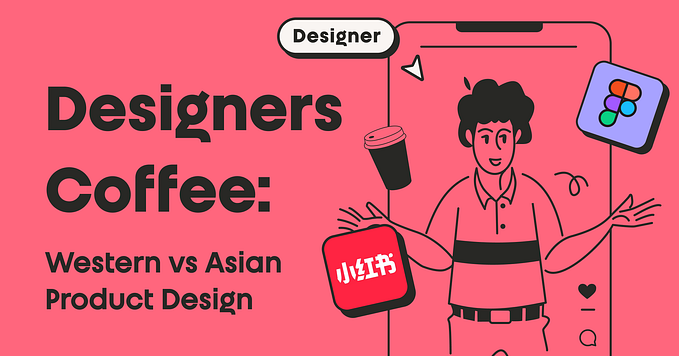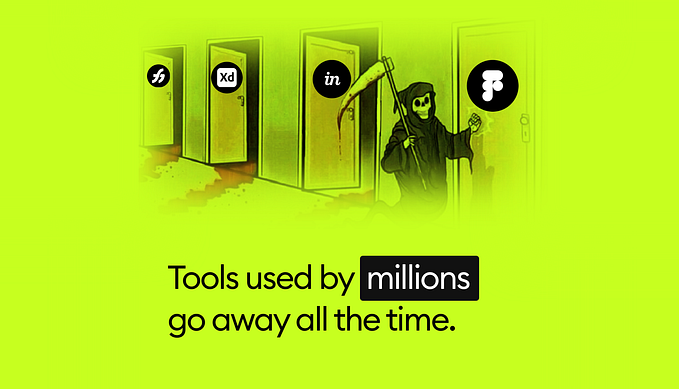Human values matter: why value-sensitive design should be part of every UX designer’s toolkit
An ethical design approach to creating virtuous technology.

Current events and scandals have pushed us as designers to think about how digital technology impacts society. Silicon Valley’s motto, ‘move fast and break things’, has been followed by an ever-expanding list of ethical issues and concerns. It has become clear that technology can negatively impact society, and we need to move towards designing ethical digital tools, products and systems.
Amidst the ‘techlash’, we should not stifle innovation — it’s part of technical progress. French philosopher Paul Virilio wrote:
“The invention of the ship was also the invention of the shipwreck… Every technology carries its own negativity, which is invented at the same time as technical progress.”
In other words, the solution is not to stop or slow down innovation; the solution is to improve technology. Currently, digital technologies are still in their infancy; therefore, finding better ways of working to create them will inherently enhance them. To do this, Hemant Taneja suggests replacing ‘minimum viable products’ with ‘minimum virtuous products’, but how do we do this, and how can designers add to the conversation?

But is it our responsibility?
To some degree, the responsibility to create better digital technology lies on us, as designers; we need to be part of the solution, not the problem. In the era of ‘move fast break and things’, designers were (some still are) implicit in using social, behavioural and cognitive methods to not only persuade users, but to manipulate them. By doing so, manipulation became the digital business model and using design tricks to exploit loopholes in human psychology, misleading users into doing things became the norm.
On the other hand, some digital technologies aren’t created with malicious intent, nor are they designed to produce predatory behaviour. They are simply products of perfect A/B testing and user-centred design (UCD), with the goal of finding out what people like and iterating on it. However, when optimising for the individual user, we lose sight of the bigger picture as well as what the technology is for or the role it should play in society.
For most of us, integrating ethics into our design processes has been a difficult task. The ostensible lack of a formalised process that provides us with specific guidance on when and at what stages we can include ethics has left us powerless. Harry Brignul’s dark patterns provide us with an understanding of manipulative design practices, but they don’t cover every single instance, and some issues may go unchecked. So, how can we plant the seed of change within our organisations?
This is where Value Sensitive Design (VSD) can help us start thinking in the right direction. VSD can help us make design decisions based on human and societal values over manipulative business models or other nefarious means. Plus, its tools and methods can help us ingrain design ethics into our design processes, ensuring that they’re not considered separately or as an afterthought.
What is VSD anyway?
To put it simply, VSD is an approach developed by Batya Friedman, Peter Kahn and David Hendry that accounts for human values in the design of technology. It emerged as a concept in the early 1990s and soon after in 1999 the Value Sensitive Design Lab was founded at the University of Washington. Since then, it has been applied to multiple technologies and various industries. VSD sits at the intersection between technology and society; helping us think about and consider how our technologies impact communities and society. Its tools and methods engage both technical and socio-structural design spaces providing a more comprehensive design space. Helping designers offer solutions that might not have been considered if approached from either a solely technical or socio-structural perspective.
So, what makes VSD unique, and why should you consider its tools and methodology?
1. It focuses on human values
As its name suggests, VSD focuses on human values bridging the gap between design and ethics. Values are expressed and embedded in technology; they have real and often non-obvious impacts on users and society. Explicitly thinking about values and considering them early in the design process will help you strategically use your design skills. Nowadays, customers are using their purchasing power to support purpose-driven companies and organisations. With VSD, you can influence your organisation in aligning your organisational or product values (missions), with those of your customers, which will enable you to create virtuous products.
Additionally, the values you identify can also serve as design principles. A great example of this is the Deloitte study, ‘Human values in the loop: Design principles for ethical AI’ which identifies human values in AI technology.

2. It considers value tensions, and how certain values may have benefits or harms
There can never be a black and white answer for whether a design, product or service is good or bad, but there are areas that we can focus on as designers. VSD can help you unearth the multiplicity of and potential conflicts among human values implicated in a technology.
Human values do not exist in isolation; they reside in a delicate state of balance with each other. They may align or come into tension at numerous levels of the human experience, such as, within an individual; among individuals; between an individual and a group; among groups, institutions, nations, and societies; and other combinations. Hemant Taneja states that ‘minimum virtuous products’ test technological effects on stakeholders and build in guards against potential harms. VSD will enable you to do this by helping you think about how altering or focusing on one value impacts and implicates others as well as which values to support.
3. It considers how certain features support specific values
Once you understand the impacts and implications of the identified values, VSD can help you distinguish features in your technology that support, hinder or prevent specific values. Using a simple real-world example, the butter knife, we can map out what it supports, hinders or prevents. A butter knife’s primary purpose is to spread butter on bread, but you could also use it as a flat screwdriver. It may not have necessarily been designed to be used that way, but it can work as a flat skew driver. On the other hand, some things are impossible to do with a butter knife such as using it as a spoon or a toothbrush. Essentially, VSD asks what values your technological features will support, what values they will hinder, and what values they will prevent.

4. It considers stakeholders indirectly impacted by technology
Unlike UCD, which solely focuses on the isolated user; VSD requires designers to seek out and consider a robust set of stakeholder groups that are strongly affected by technology. There are two overarching stakeholders categories; direct stakeholders who directly interact with the technology, and indirect stakeholders who never or rarely interact with it but are affected by its use. Considering others impacted by technology helps you zoom out and look at the technology from both a technical and a socio-structural perspective.
5. It views technology from a socio-structural perspective
As designers, we have to think about how we can build products that shape the world we want to live in, and VSD helps us do just that. Tools are fundamental to the human condition, and…
…“in designing tools, we are designing ways of being” — Terry Winograd and Fernando Flores.
The products, services and systems we create are increasingly becoming part and parcel of modern life, people from diverse communities and nations use them to communicate, to learn, to make a living, to access systems of justice and so on. These technologies are a result of our imagination; therefore, we have to create them in ways that are more likely to support the actions, relationships, institutions, and experiences that human beings care deeply about. VSD will help you broaden how you think about the breadth of human experiences, as we all know, there are so many life experiences, and there’s no way you can think of them all. However, VSD enables you to do this by highlighting how technology both shapes society and is shaped by social factors.

6. It has a unique methodology and toolset
VSD has a set of unique methods that you can readily incorporate into your design process. As a VSD beginner, apart from value and stakeholder identification and analysis, the three most straightforward tools you can incorporate into your design process today are Envisioning CardsTM, Value Scenarios and Value Sketches. Envisioning CardsTM are built on four criteria: stakeholders, time, values, and pervasiveness. They can be used for ideation, co-design, heuristic critique, evaluation, and other purposes. Value Scenarios are narratives or stories of use that emphasise the implications for stakeholder groups, widespread use, indirect impacts and similar systematic side effects. Value Sketches are drawing activities that tap into stakeholders’ non-verbal understandings, views, and values about a technology.
However, if you are willing to go further, you can incorporate the entire VSD approach. Like other design methodologies, VSD is a non-linear, iterative design approach. It uses a tripartite method that examines conceptual, empirical and technical issues. Conceptual investigations are informed explorations of the central issues and constructs under investigation, and can be analytic, theoretical, or philosophical. Empirical investigations are applied to any human activity that can be observed, measured or documented. These are the quantitative and qualitative methods we use in our UX research, such as observations, interviews, surveys, measurements of user behaviour, e.t.c. Lastly, technical investigations focus on the technology itself. They explore how a technology is more suitable for specific activities, readily supporting certain values while rendering other activities and values impossible.

7. It provides you with the data to influence your business leaders
Unethical design manifests itself not only in design decisions but also in business models. As a designer, you have the power to influence business leaders away from these unethical models, and you can use data to do this. It’s our job as designers to find innovative solutions that meet business objectives without having to resort to nefarious means. VSD investigations that approach research from a value perspective can help you get data to reinforce why certain features or dark patterns might be unethical, providing you with the opportunity to work on finding ethical design solutions to problems.
8. It’s applied iteratively
Unlike ‘move fast and break things’ VSD’s motto is ‘progress isn’t perfection’, and it’s relevant to all aspects of the practice. This motto embraces the overarching perspective and strategy for navigating the challenges of addressing values in technology. It reminds us that achieving progress is a noble goal even though perfection remains ever fleeting.
Conclusion
While VSD is no silver bullet, it empowers us with the language needed to discuss the often immense social consequences of technological innovation. It moves us towards considering human values as a design criterion, the same way we deem traditional standards of reliability, usability, efficiency and accessibility. As with the conventional criteria for evaluating technology, we don’t require perfection, but the commitment to practice:
Hence, numerous researchers argue that VSD is the next UCD, in the sense that it will continue to grow and usher in a new way of thinking when designing technologies. UCD or the focus on the user is infused throughout design processes even when there is no explicit mention of it. Likewise, the focus on human values will become commonplace rather than a novel perspective.
In conclusion, design mediates how people interact with technology; accordingly, it is up to us to make it comprehensible and honest. We have to think about how we can build technologies that shape the world we want to live in. Therefore, we have an obligation as designers to create ethical experiences.
Further reading:
Value Sensitive Design: Shaping Technology with Moral Imagination by Batya Friedman and David G. Hendry
Center for Humane Technology founded by Tristan Harris and Aza Raskin
Human values in the loop: Design principles for ethical AI by James Guszcza, Michelle A. Lee, Beena Ammanath, and Dave Kuder
The Era of “Move Fast and Break Things” Is Over by Hemant Taneja
Ethical Design: The Practical Getting-Started Guide by Trine Falbe
Addiction by Design: Machine Gambling in Las Vegas by Natasha Dow Schull
The Age of Surveillance Capitalism by Shoshana Zuboff
Strategic Design: Eight Essential Practices Every Strategic Designer Must Master by Dr. Giulia Calabretta, Prof. Gerda Gemser and Dr. Ingo Karpen
References:
1. Robert D. Atkinson J. A Policymaker’s Guide to the “Techlash” — What It Is and Why It’s a Threat to Growth and Progress. Itif.org. https://itif.org/publications/2019/10/28/policymakers-guide-techlash. Published 2019.
2. Virilio P, Petit P, Lotringer S. Politics Of The Very Worst. New York: Semiotext(e); 1999.
3. Taneja H. The Era of “Move Fast and Break Things” Is Over. Harvard Business Review. https://hbr.org/2019/01/the-era-of-move-fast-and-break-things-is-over. Published 2019.
4. Murgia M. When manipulation is the digital business model. Ft.com. https://www.ft.com/content/e24dea0a-6b57-11e9-80c7-60ee53e6681d. Published 2020.
5. Brignul H. Dark Patterns. Darkpatterns.org. https://darkpatterns.org/. Published 2018.
6. Friedman B, Hendry D. Value Sensitive Design: Shaping Technology With Moral Imagination. MIT Press; 2019.
7. Calabretta G, Gemser G and Karpen I. Strategic Design: Eight Essential Practices Every Strategic Designer Must Master. BIS Publishers; 2016.
8. Rumsey R, Business Thinking for Designers. https://www.designbetter.co/. https://www.designbetter.co/business-thinking-for-designers. Published 2020.
9. Guszcza J, Lee M, Ammanath B, and Kuder D. Human values in the loop: Design principles for ethical AI. Deloitte Insights; 2020.
10. Friedman B, Kahn P, and Borning A. Value Sensitive Design and Information Systems. Forthcoming in P. Zhang & D. Galletta (Eds.), Human-Computer Interaction in Management Information Systems: Foundations. M.E. Sharpe, Inc: NY; 2012.
11. Friedman B, Hendry D, and Borning A. A Survey of Value Sensitive Design Methods. Foundations And Trends® In Human–Computer Interaction, 11(2), 63–125. DOI: 10.1561/1100000015; 2017.
12. Davis J, and Nathan L. Value Sensitive Design: Applications, Adaptations, and Critiques. In J, van den Hoven, P.E, Vermaas, I, van de Poel. Handbook of Ethics, Values, and Technological Design. Springer. DOI: 11–40. DOI: 10.1007/978–94–007–6970–0_3; 2015.







